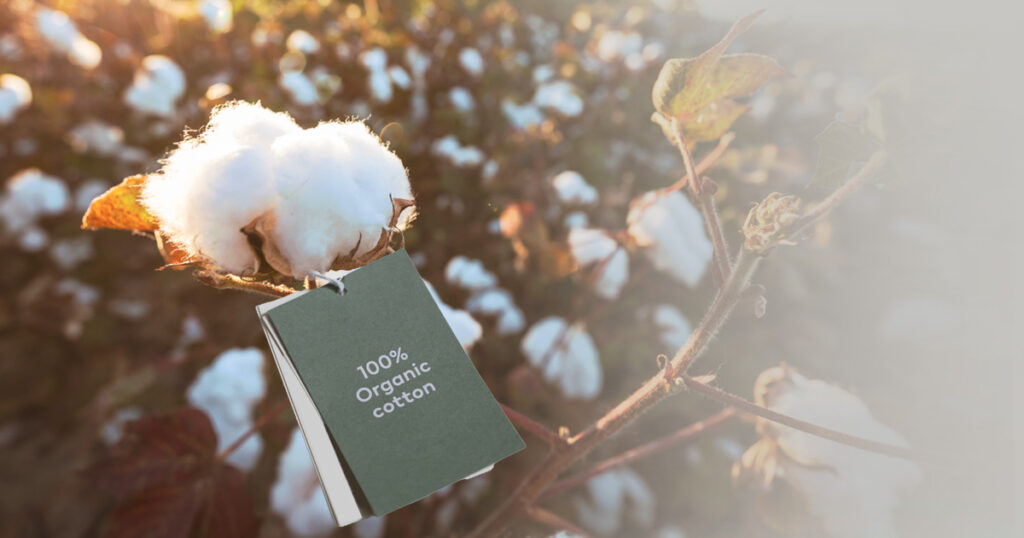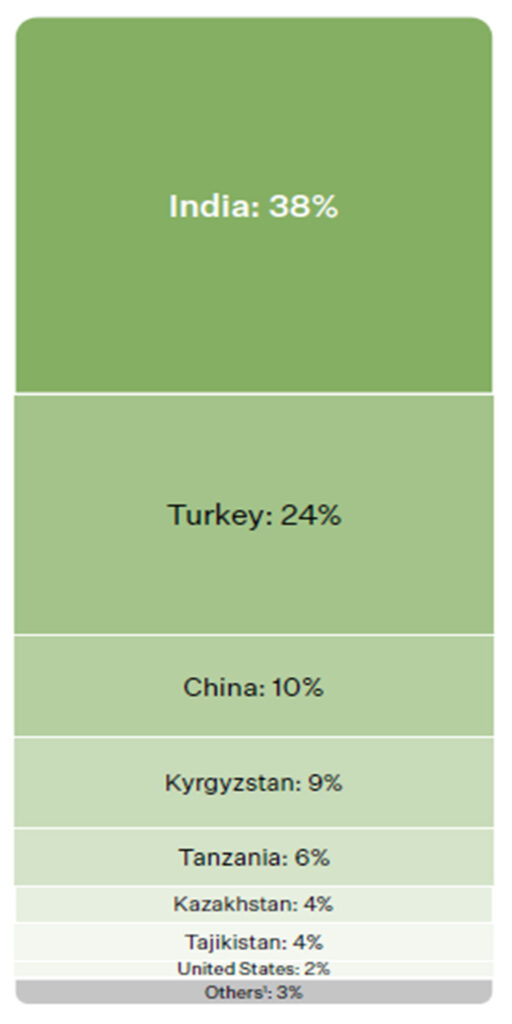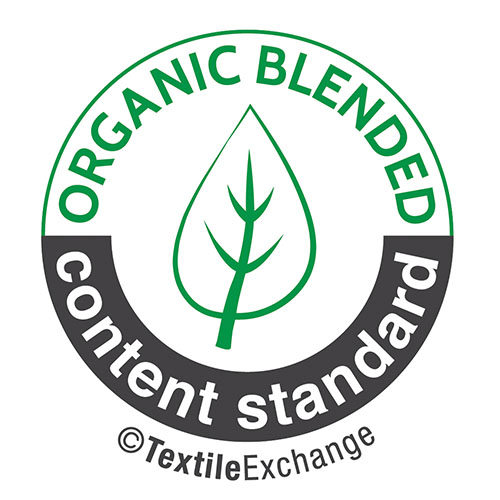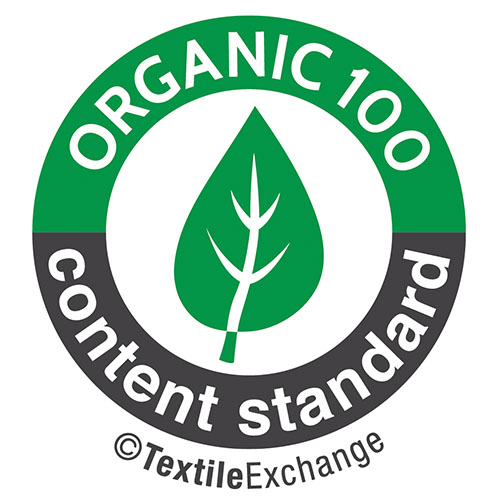An honest review of organic cotton.
As our awareness of the impact we have on the environment has grown, so has the demand for products and materials that minimize that impact. One of those materials that has gained quite a lot of traction is organic cotton, a more sustainable option that still allows us to enjoy the benefits and versatility of cotton fibers.
Unfortunately there’s a lot of misinformation circulating the internet regarding the benefits of organic cotton. So, to help you make an informed decision, we wanted to rectify some of those myths and give a balanced, easy to read review of the material.

The basics of organic cotton.
First, let’s quickly look at the basic facts and properties of organic cotton.
What is organic cotton?
The term organic cotton generally refers to cotton that was grown without the use of synthetic chemicals, like fertilizers and pesticides, or genetically modification technology.
However, as we’ll talk about later in the article, there isn’t one single definition of what it means for cotton to be organic. Neither does the term organic say anything about what happens to the cotton after it leaves the farm.
Where is organic cotton grown?

Cotton farming is an absolutely massive industry, with 30 million tonnes of cotton fiber produced worldwide every year. However, less than 2% of that amount is certified organic, the vast majority of which is grown in only a handful of Asian countries.
India, Turkey and China alone make up about 75% of global organic cotton production. Meanwhile, the USA, which is another major producer of regular cotton, only grows about 2% of organic cotton.
The included graph shows the percentage of global organic fiber production by country in 2020/21 and was provided by Textile Exchange’s Organic cotton market report.
Why not all organic cotton is created equal.
With cotton production covering some 75 countries and involving over 22 million farmers, it’s not surprising that there are significant differences when it comes to quality, environmental impact and labor practices. And unfortunately, just like with a lot of other sustainable products, green-washing (making things seem more sustainable then they are) is a real issue. So there are 3 key issues to watch out for when shopping for organic cotton.
1. The term Organic is relative.
The problem with the term ‘organic’ is that there really isn’t one worldwide standard for what it means. Different countries have different regulations about what counts as ‘organic’ and some have no regulations at all. So the idea you might have when looking at an ‘organic’ label might not correspond to its reality.
2. Regular cotton can be passed off as organic.
Organic cotton is generally more expensive than regular cotton. Unfortunately that also means that people have an incentive to pass off regular cotton as organic.
This can be done by anyone in the supply chain, from the farmer to the ginner, spinner, weaver, dye house or even the clothing factory; and can be as easy as simply changing the label on the packaging. So even if the apparel brand thinks they’re using organic cotton in their clothing, that might not actually be the case.
3. Growing the cotton is just the first step in a long supply chain.
The growing of the cotton is only the first step in a long supply chain that ultimately produces your t-shirt or towel. During that process there are a lot of steps that can be equally harmful to the environment. The dyeing process especially can be extremely polluting.
So while the cotton in your t-shirt might be grown organically, a lot of harsh chemicals could still be used during its production. And if you’re interested in buying organic, that’s probably not something you want to see.
How to identify actual organic cotton.
Luckily for the rest of us, we’re not the first to realize the problems mentioned above and there are some wonderful organizations that came up with some solutions.
One standard for organic cotton
To make it easier to define what organic cotton is, the International Federation of Organic Agriculture Movements (IFOAM) has set up there own standard which describes the conditions under which cotton must be grown in order for it to be called organic. While there are too many to list here, these are the key take-aways:
- No genetically modified seeds or products.
- No synthetic pesticides, insecticides, growth regulators or other toxic chemicals.
- Responsible water and soil management.
- Respect biodiversity.
They then compared their own standard with regulations around the world to see which ones match it. Those that do are included in the IFOAM family of standards, which can be easily found on their website. This is also the definition we will be using for the rest of article.
Third Party Certifications
Now we understand what organic cotton is, we need to be sure that’s what we’re actually getting when we buy it. In that sense issue 2 and 3 are very similar: we need to know that the supply chain of the entire product was ethical.
If you know the country of origin, that can go a long way. Countries like the USA often have more regulations and oversight when it comes to environmental standards, workers rights and counterfeiting compared to most developing nations. But as we mentioned earlier, they only produce a tiny percentage of the world’s organic cotton.
That means that by far the best way to determine if you’re buying organically grown and safely processed cotton is through third party certifications. These are independent organizations that verify the supply chain of the product you buy to see if they meet the necessary conditions. There are two labels we want to introduce you to.
Organic Content Standard
The Organic Content Standard (OCS) is a certification by Textile Exchange that proves that the organic cotton in the relevant product is in fact cotton that was grown according to the IFOAM family of standards. However, it doesn’t say anything about the processing of the cotton and comes with some other caveats. There are 2 versions of the certification:

OCS Organic blended: the product contains at least 5% organically grown material, calculated as a percentage of the entire product excluding accessories or trims.
Example: your t-shirt might be made of 20% organic cotton, 30% regular cotton and 50% polyester.

OCS Organic 100: the product contains at least 5% organically grown material, calculated as a percentage of the entire product excluding accessories or trims and doesn’t contain certified and non-certified content of the same material type.
Example: your t-shirt might be made of 50% organic cotton and 50% polyester, but can’t contain regular cotton.
Global Organic Textile Standard
The Global Organic Textile Standard (GOTS) is the gold standard for identifying responsibly made, organic cotton products. Just like with the OCS, the cotton has to be grown according to the IFOAM family of standards. In addition, they look at the entire production chain, both in terms of environmental and social norms. That means in each facility:

- Workers rights are protected
- Working conditions are safe and hygienic
- Only low impact inks and dyes are used
- Wastewater is treated properly
- Energy and water use is monitored
The amount of organic fiber in the final product is also significantly higher than with OCS:
- 95 – 100% organic fibers : label can simply say ‘Organic’
- 70 – 94% organic fibers : label has to state the percentage of organic materials
- <70% organic fibers : can’t be GOTS certified
Summary
As you may have gathered by now, not all organic cotton is created equal. When shopping, don’t just trust any organic label. Instead, make sure they’re OCS or preferably GOTS certified. Alternatively, if the company is very transparent about their supply chain and most, if not all, of the supply chain is located in countries with reliable regulations, this could also be sufficient.
What are the advantages of organic cotton compared to regular cotton?
Now we’ve established what defines organic cotton, let’s take an honest look at its advantages and perhaps debunk some myths that have been circulating about its properties. To keep things simple, we will only make a comparison to regular cotton, not other sustainable materials like linen or hemp.
Does organic cotton use less water than regular cotton?
So far, there’s no definitive evidence that this is the case. While one study from Textile Exchange showed a 91% reduction in water usage, this study didn’t actually compare the same farm and shouldn’t be taken as proof, especially not for the entire industry.
While certified organic cotton farms generally employ responsibly water management techniques, as this is one of the conditions for certification, this doesn’t mean that regular cotton farms can’t employ those same techniques.
Does organic cotton emit less carbon?
This varies heavily from case to case. While organic cotton farms will generally emit less carbon because they don’t use synthetic fertilizers and are designed to be more in concert with nature, the rest of the supply chain should be taken into account.
For example: imagine you buy a t-shirt in the USA, but the organic cotton was farmed in India, then transported to China where it was made into a t-shirt, and then shipped across the Pacific. This t-shirt will probably have a higher carbon-footprint than a t-shirt made entirely in the Carolinas from cotton grown in Georgia, even if it isn’t organic.
Does organic cotton cause less pollution?
Definitely. To grow regular cotton, farmers often use large amounts of pesticides and synthetic fertilizers which can pollute both air and waterways. This can have seriously harmful effects on local environments and communities, even the farmers themselves if they don’t employ proper protective gear.
Do keep in mind though that the growing of the cotton is only the first step in the supply chain and harmful chemicals are used in other steps as well. This is why we recommend GOTS certified products, as they ensure that the environment is taken into account during the entire production process.
Is organic cotton of higher quality than regular cotton?
Not necessarily. This depends far more on the variety of cotton grown and specific circumstances than whether or not the cotton was grown organically. For example: handpicked cotton is often regarded as of higher quality because it’s less damaging to the fibers; and while most organic cotton is picked by hand, that isn’t a requirement for it to be called organic. American grown organic cotton for instance, is most likely mechanically harvested.
Summary
By far the biggest advantage of organic cotton is the fact that it doesn’t use chemical pesticides or fertilizers, which reduces water and air pollution. It’s usually also grown under more sustainable water and soil management, leading to less soil erosion.
Organic cotton may also use less water than regular cotton and have a smaller carbon footprint, however this varies significantly from case to case.
Conclusion
While organic cotton definitely has some environmental benefits, it’s important not to fall for a lot of marketing myths that are not actually based on proper studies. So we want to leave you with a couple of tips to keep in mind when shopping for organic cotton:
- Cotton farming is a huge and varied industry, so not all organic cotton is the same. Be skeptical of generalizations.
- Don’t just trust any organic label, even big companies can be fooled into thinking they’re selling organic cotton. Look for third party certifications like OCS or GOTS.
- The farming of the cotton is only the first step in the production process, keep the rest of it in mind as well. Make sure it takes place in countries with strong regulations or look for the GOTS label.
Hopefully this article was helpful to you and good luck out there!

Leave a Reply
You must be logged in to post a comment.